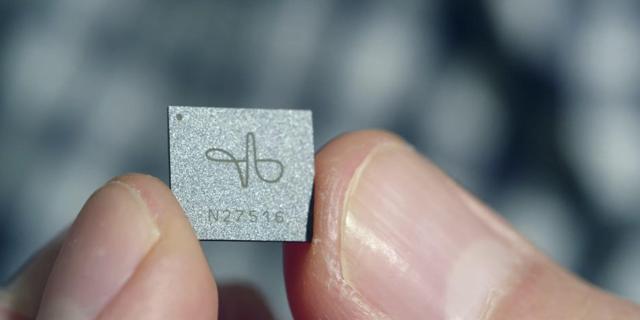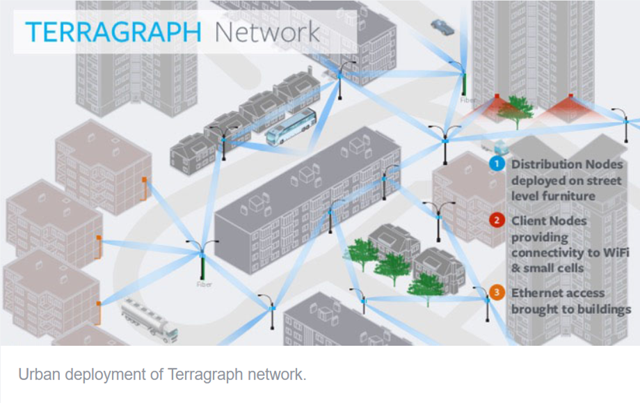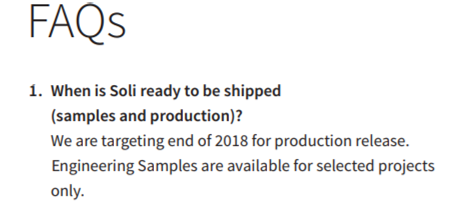2019 Could Be The Year Google Radar Comes Back
I have a lot of faith in Project Soli. Several of my articles include a brief mention of project Soli and its implications. In one of my first articles, I thought that Soli could be integrated into the Pixel 2, but my timing was off.
Soli did not provide much news since 2016, apart from a brief incursion into the Health world, when researchers showed that it might be feasible to measure glucose in blood using radar technology. However, Soli could not blossom as designed due to FCC restrictions that required the chip to be operated at lower power levels than initially intended.

Source: 9 to 5
Finally, at the end of last year, the FCC gave the green light for Google to operate Soli at higher power levels and aboard an aircraft - opening the door for Google(GOOG)(GOOGL) to bring Soli back from the ashes and possibly include it on this year´s smartphones and wearable devices.
The Gossip
The Soli chip was born at ATAP (Advanced Technology and Projects group), a skunkworks group created by Regina Dugan at Motorola. Google bought and sold Motorola but kept ATAP and its projects.
Before creating ATAP, Regina led projects at DARPA developing portable equipment for explosive device detection; later she would become the Director of DARPA.
In 2016 Regina left ATAP to lead a “similar” group for Facebook´s "Building 8." Regina left Facebook in early 2018.
On March of last year, Google requested from the FCC a waiver to operate the Soli Chip at a higher power than the FCC allowed since the power restrictions prevented the chip from registering hand gestures properly. Following that, Facebook (FB) issued a letter to the FCC, where it asked them to review in greater detail the possible interference that the Soli chip could have to other devices in the 57-71 GHz Band.
Google has not demonstrated that operating Project Soli radars would not cause harmful interference and adversely impact other devices operating within the 57-64 GHz (“60 GHz”) band—specifically, point-to-point communications between short-range devices (“SRDs”).
-Facebook´s Letter to the FCC
Facebook also has plans for the 60 GHz band. It wants to improve internet speed, and cost of WiFi in cities, and is planning to do so with Terragraph.

Source: Code Facebook
Facebook´s idea is to install several nodes 200-250 meters apart to create a mesh in which data could flow at fast speeds and lower costs than 4G. .This system would operate using roughly the same frequency that the Soli Chip uses.
Facebook is testing Terragraph on its headquarters in Menlo Park and is preparing a broader trial with the city of San Jose in California. Facebook has demonstrated 1.05 Gbps bidirectional (2.1 Gbps total throughput per distribution node) in P2P mode, up to 250 meters away. If successful, the technology could shift the telecommunication dynamics in urban areas.
Google reached an agreement with Facebook and the other interested parties, where it agreed to slightly reduce the peak power limit the Soli Chip would use in order to ease their concerns.
Google, following discussions with interested parties, indicated that it could operate Soli sensors under a waiver incorporating a lesser peak power limit than sought in its waiver request and while adhering to a maximum duty cycle requirement.
Presumably, this would not hinder Facebook´s plans for Terragraph nor limit the capabilities of the Soli chip.
How quick could Google move?
Google already had very advanced prototypes of an LG SmartWatch and JBL Speakers that incorporate the Soli Chip in 2016, but the FCC restrictions prevented Soli from functioning properly. (Video)
Since the prototype shown almost three years ago seems quite functional, it is very likely that Google can easily incorporate the Chip in 2019 devices if it desires to do so. According to Evan Blass, last year we were supposed to see a new Pixel Watch.

Source: Evan's Twitter
While the leak turned out to be wrong, if the Pixel Watch was designed with the Soli Chip, when the Pixel 3 launched, in October of last year, the FCC had not granted the waiver to use Soli Chip, which would make it impossible for Google to launch the Smartwatch.
The FCC approval came a little late to meet Infineon´s prediction also, and as of today neither Infineon nor Google have launched the new DevKits. Hopefully, the kits will be available launched in December of 2019, after the October Launch of the Pixel 4 and maybe the Pixel Watch.
 Source: Infineon
Source: Infineon
This year´s Google IO conference in May could reveal or hint Google´s next steps for Soli and if it has any plans to integrate it in its new devices set to launch in October, as it has become a tradition.
Conclusions
The Soli chip has many applications in wearables and IoT devices. In a previous article, I state that three big changes are coming in technology in the following years, Artificial Intelligence (AI), IoT devices and the other half of the population getting internet.
The Soli Chip leverages Artificial intelligence and could radically change the IoT devices industry, and shift the balance between iOS and Android on wearable devices.
The inclusion of radar technologies could open the door for many applications and changes in user´s interface, and provide a revolution on the applications and capabilities of what a smartphone can do, and its integration with VR could improve the overall experience and simplify controls.
Although not the main point of the article, Facebook´s Terragraph could provide to be a precious asset and its development could play an essential role in changing how telecommunications services are priced and sold in urban areas.
If there is anything in this article you agree or disagree with or would like me to expand further; I would sincerely appreciate you leaving a comment. I will address it as soon as possible.
Disclosure: I am Long GOOG, GOOGL, FB




This sounds like big news. Yet this is the first I've ever heard of #ProjectSoli or #GoogleRadar. $GOOGL
It's an amazing technology!
It most certainly is! Great article.
Yes.